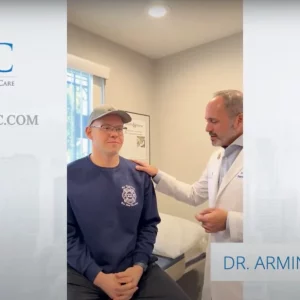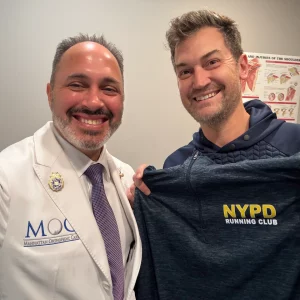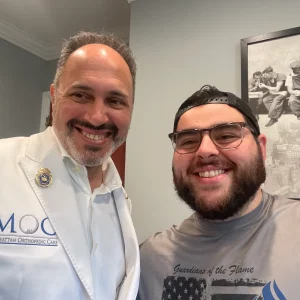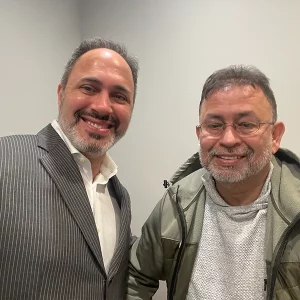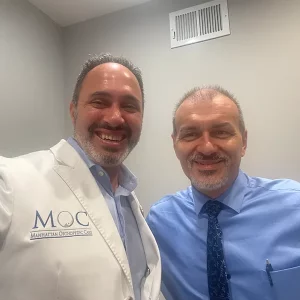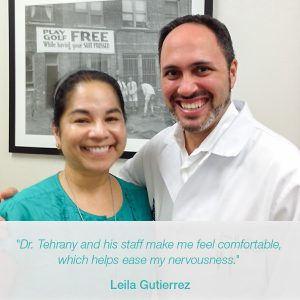How Kids’ Sports Can Lead to Knee Pain in Children
Across the country, sports fields are filled with children’s athletics. It is estimated that more than 25 million children participate in scholastic sports and another 20 million compete in community league sports activities.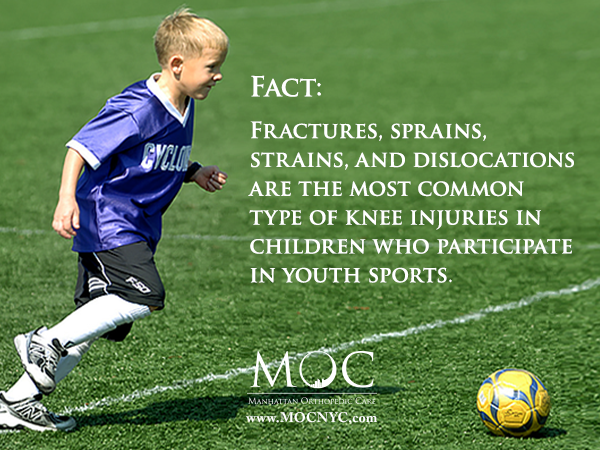
Image source: USAG- Humphreys, Flickr
While there are many benefits to involvement in athletics, kids’ sports injuries put thousands of young athletes on the sidelines every year. Fractures, sprains, strains, and dislocations are the most common type of knee injuries in children as a result of their participation in youth sports. Components of the Knee The knee is the largest joint in the body. Located at the end of the femur and above the tibia, the joint is protected by the patella (kneecap). Cartilage covers the joint components and provides a cushion to prevent bones from grinding against each other. Extra cartilage pads (menisci) help absorb the weight of the body on the joint. There are two menisci in the knee joint; the inside medial meniscus and the outside lateral meniscus.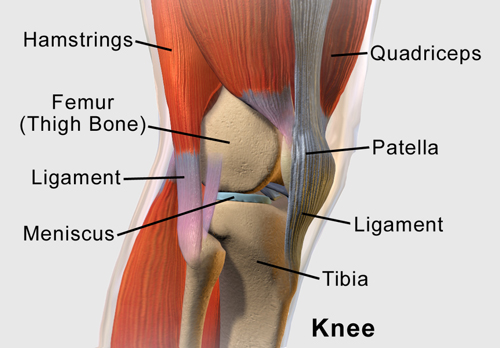
Image source: BruceBlaus
Tendons are cables of strong tissue that connect muscles and bones. Ligaments connect bone to bone. All these necessary components work together to keep the knee stable and functioning correctly.
Kids’ Sports Injuries Of the common kids’ sports injuries, the knee suffers from overuse due to frequent repetitive motions. Sudden stops, twists, pivots or blows to the knee also cause knee pain in children. Many injuries can be prevented through proper training, attention to muscle strength and flexibility and use of correct protective gear. When an injury occurs, it is important to accurately describe how it happened to the doctor. This provides valuable clues about the probable damaged component of the knee. When a parent or coach learns of knee pain in children, apply basic first aid: RICE is the acronym for Rest, Ice, Compression and Elevation. Minor injuries may resolve with the use of this basic initial care. Knee sprains involve damage to the ligaments. The most serious sprains include complete tears of either the anterior cruciate ligament (ACL) or medial collateral ligament (MCL). Some common symptoms of a knee sprain include the following: popping or snapping sound at the time of the injury, pain that feels like it comes from inside the knee, inability to bear weight on the injured leg, swelling of the joint and the knee feeling unstable. Knee strains are similar to sprains and occur when a child partially tears a ligament. Fractures involved cracked, broken or shattered bone. Kids may have trouble moving the bone, and are likely to have significant pain. Patella dislocation occurs when the kneecap is knocked off to the side of the joint. Sometimes it will reset on its own, but it usually requires a doctor to put it back into place. After initial treatment, some kids will need a knee stabilizer (brace) or cast to allow the knee to heal. More serious injuries may require surgery to correct. Children and adolescents are skeletally immature. Open growth plates make them susceptible to unique injuries. Physicians need special training to appropriately understand the bone and ligament development stage of the injured child. Open growth plate injuries require specialized surgical treatment. Many knee surgeries can be performed arthroscopically, which is minimally invasive. The surgeon makes a small opening and inserts an arthroscope, a tiny tool-like tube into the joint to perform the surgery. If arthroscopy isn’t appropriate due to the complexity or location of the injury, an open surgery may be necessary. Some form of rehabilitation therapy is also necessary to fully recover from the knee injury. Young patients must cooperate with the full-proscribed rest and recuperation period to avoid re-injuring the knee. Injury Prevention Given the serious nature and consequences of these knee injuries, the benefits of better injury prevention are clear. In addition to the use of appropriate protective gear, parents need to know some additional tips for avoiding kids’ sports injuries. Some include:What age is appropriate for children’s sports? Children ages five and under are too young for most organized sports. Unstructured free play is best during this timeframe. Families can engage in hiking, walking, and running to develop basic fitness for the whole family. From the ages of six to nine, kids have improved vision and attention spans. They show gains in transitional skills such as throwing for distance. Sports such as T-ball, softball, baseball, soccer, gymnastics, swimming, tennis and martial arts are possible activities for this age group. By the ages of ten to twelve children have developed mature vision and the ability to understand and retain sports strategies. These kids may be ready to try more complex skill sports such as football, basketball, and hockey. Be aware that growth spurts during this period can affect conditioning and balance. Before enrolling your child in contact sports, consider his or her age, maturity and physical size. Is your child developmentally ready for the physical contact, aggressiveness, and level of competition involved? Does your child want to participate? During the years of puberty, kids develop at different rates, causing significant differences in size, height and weight in kids of the same age. A smaller child competing against someone more physically mature may be at increased risk of injury. Early engagement in structured and unstructured physical activity can lay the foundation for a lifetime of healthy fitness practices. Thoughtful participation will help insure they have a positive experience while minimizing the risk of serious injury and knee pain in children.
- Always warm up and cool down when participating in practice and competitions. Stretching muscles after warm up helps prepare the body for the coming activity.
- Encourage regular strength training to support muscle and joint strength. Resistance training supports muscle and bone strength.
- When jumping, make sure that the child lands with the knee bent so they take the pressure off the knee joint.
- If the sport requires a lot of lateral moves, pivots or sudden direction changes, encourage them to crouch or bend at the knee and hip to reduce the chance of an ACL injury.
- Encourage year round conditioning and strength training even if the sport is seasonal.















